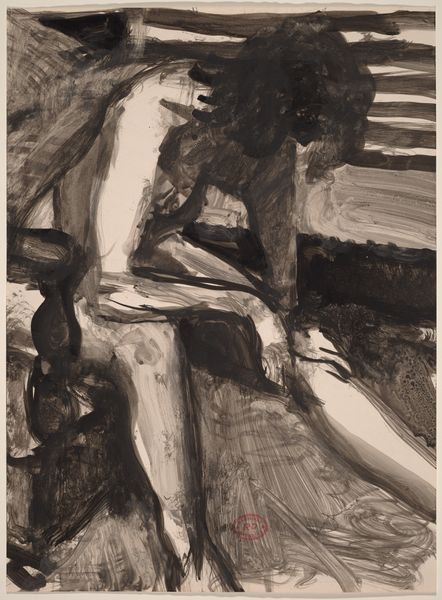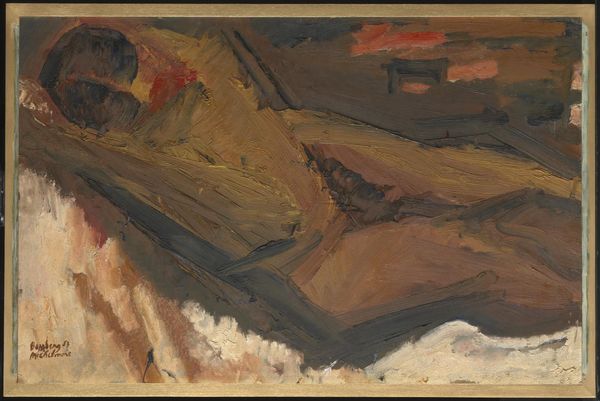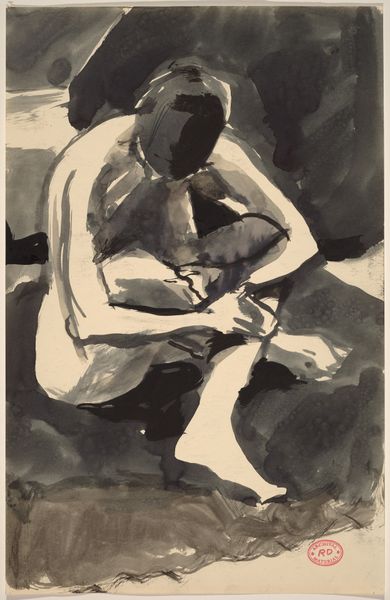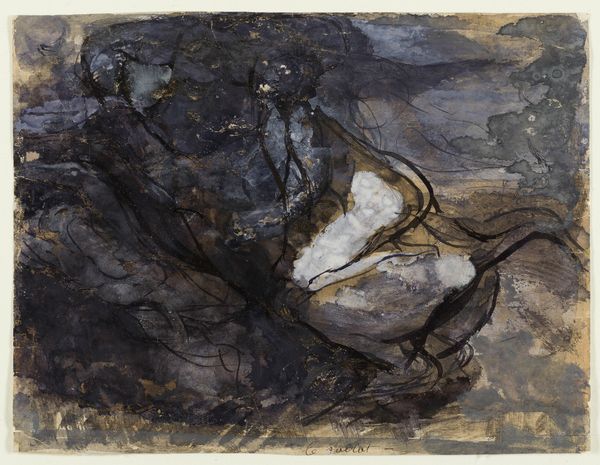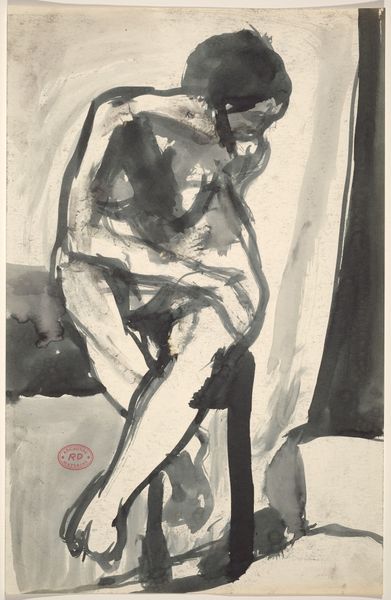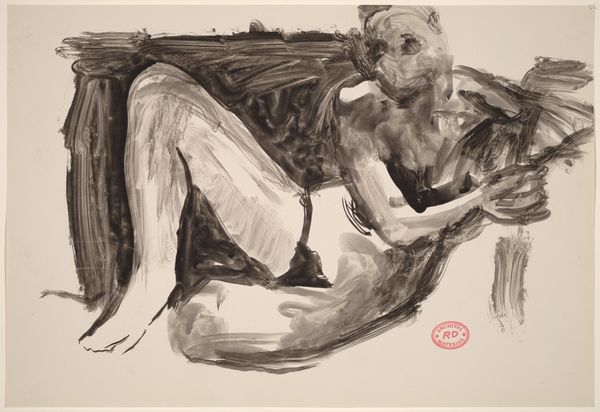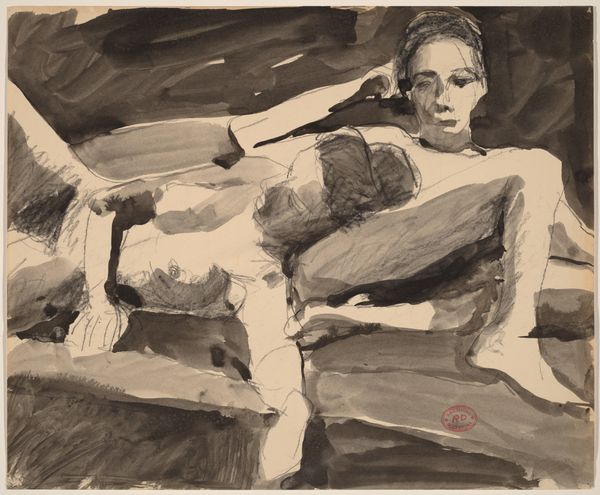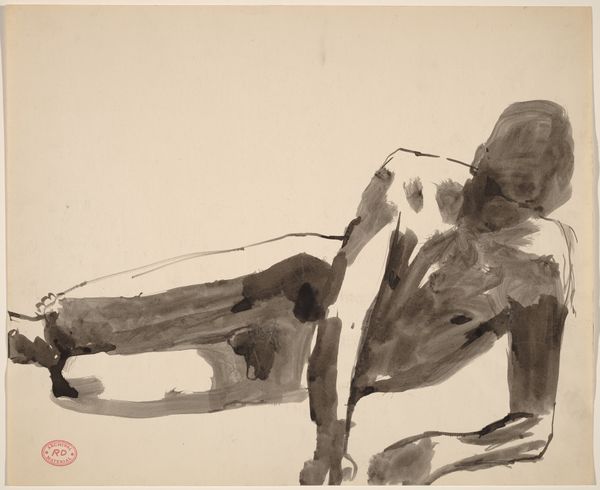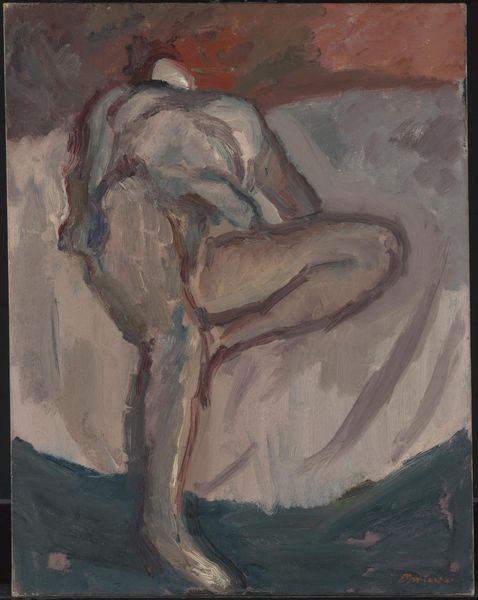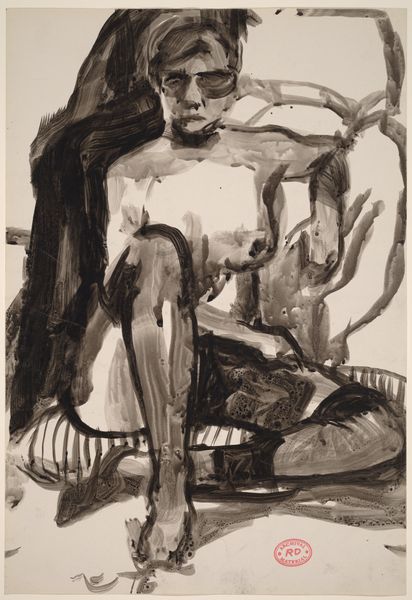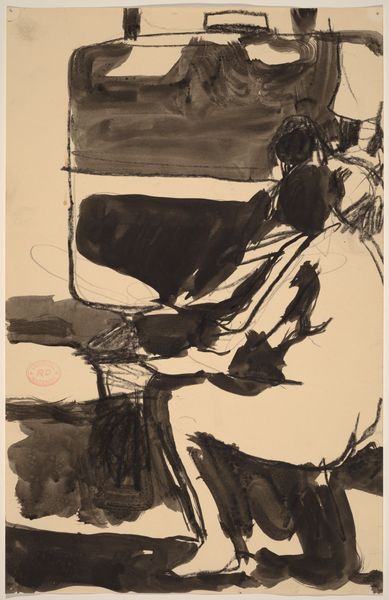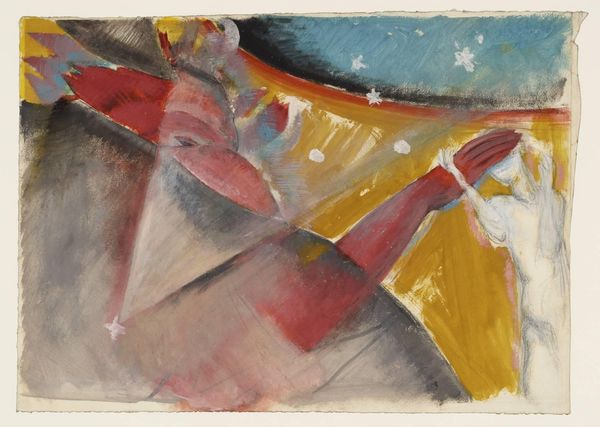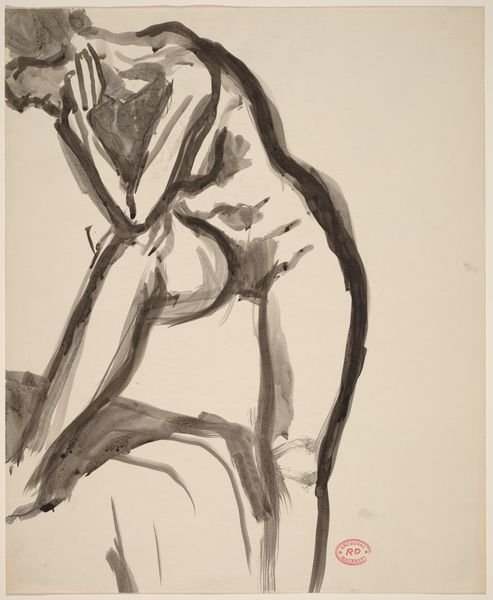
painting, oil-paint, oil
#
portrait
#
16_19th-century
#
painting
#
oil-paint
#
oil
#
figuration
#
oil painting
#
symbolism
#
history-painting
#
nude
Dimensions: 30.3 x 38.0 cm
Copyright: Public Domain
Curator: This is Albert von Keller's "The Martyr," an oil painting completed around 1892. It resides here at the Städel Museum. Editor: Immediately striking, isn't it? The muted tones create this intense feeling of serenity mixed with utter exhaustion. It feels deeply vulnerable, seeing the figure rendered so softly, almost dissolving into the canvas. Curator: The artist was clearly engaged with Symbolism, although in his broader career he traversed different styles. Given Keller's interest in spiritualism and occultism, it makes sense he’d depict the archetypal martyr, presented as a sensual, vulnerable figure. It prompts a conversation about gender and power. Editor: Absolutely. The female martyr trope, specifically—the beautiful, suffering woman as a conduit to the divine—it reinforces societal expectations. Keller walks a tightrope, depicting beauty and agony. But it raises questions about the male gaze, especially concerning victimhood and spirituality intersecting with gender roles. How complicit is the artistic process in perpetuating those ideas? Curator: And contextually, thinking of fin-de-siècle anxieties, Keller situates the martyr outside established religion and into the symbolist idiom. His loose brushstrokes, departing from academic precision, mirrored his modern view of faith as subjective and less tethered to church institutions. It certainly deviates from the traditional depiction. Editor: I see how it attempts that—recasting sacrifice outside rigid doctrines. But the aestheticization is something to consider. It can risk minimizing actual suffering for the sake of symbolism. What responsibilities do artists have when portraying pain, particularly when that pain echoes so many real historical and present-day struggles? Curator: A crucial point. Considering our era and cultural reckoning, such imagery asks us to consider visual history, to approach it with thoughtful, critical perspectives. Keller's work becomes a prompt. Editor: Exactly. We engage with it critically, exploring not just Keller’s intentions or his art history moment, but the artwork’s presence in our world today. It can deepen and reframe our relationship to those concepts. Curator: Thank you. It has been interesting considering the work, and its different implications. Editor: Indeed. Thank you for your insightful perspectives; the nuances were fascinating.
Comments
No comments
Be the first to comment and join the conversation on the ultimate creative platform.
